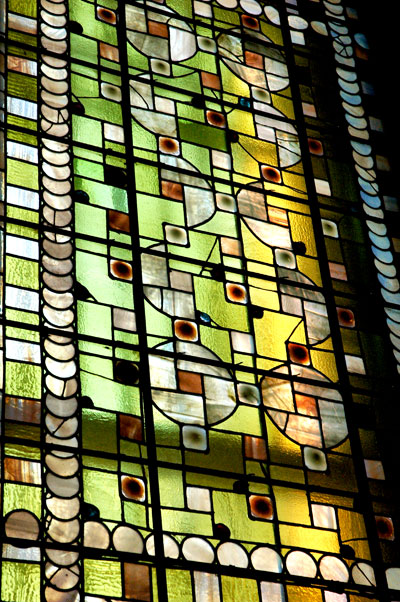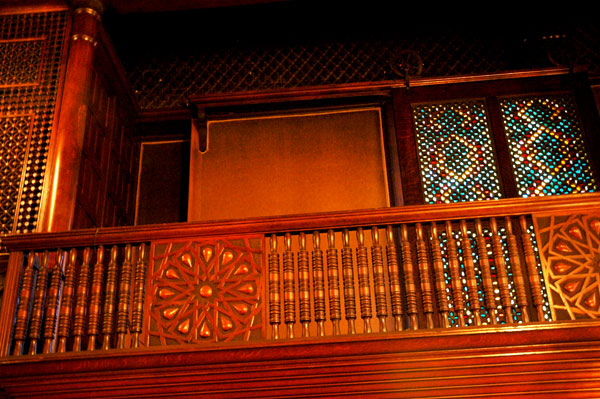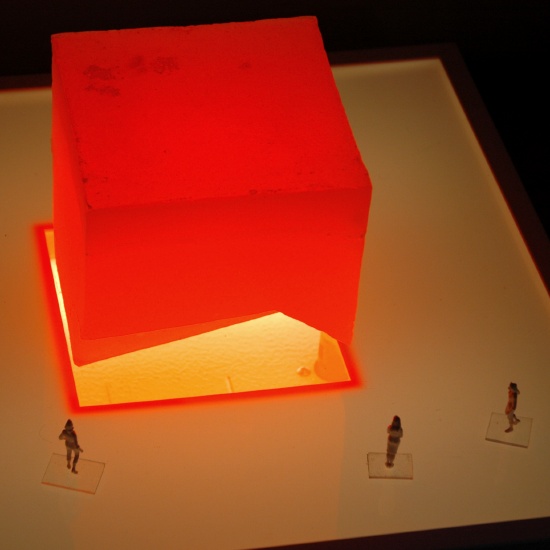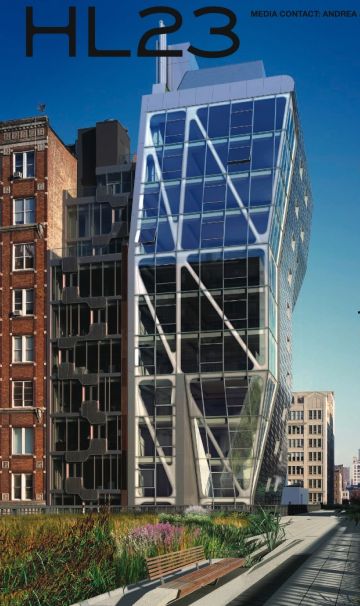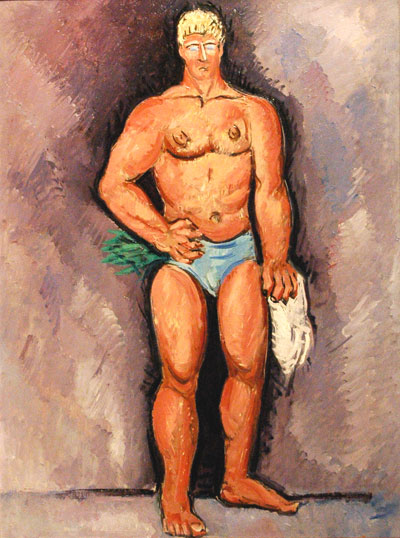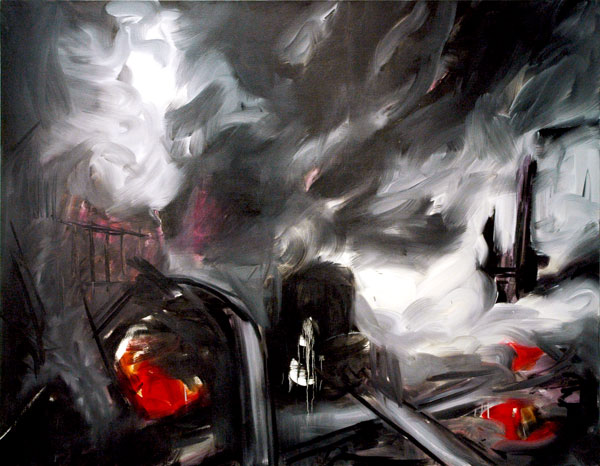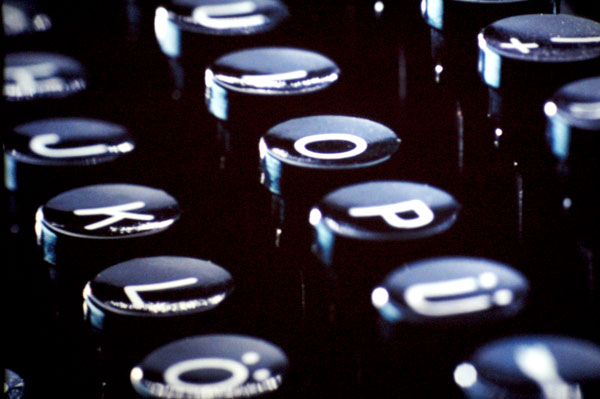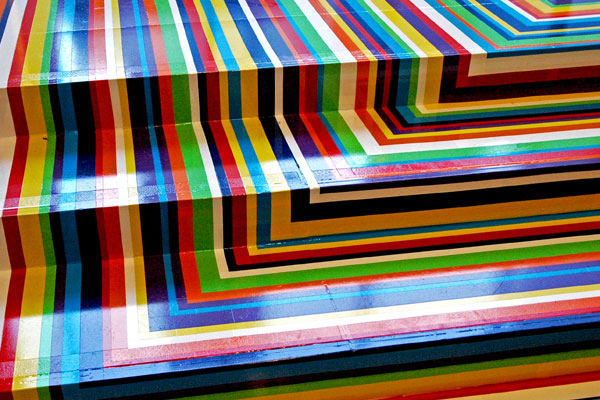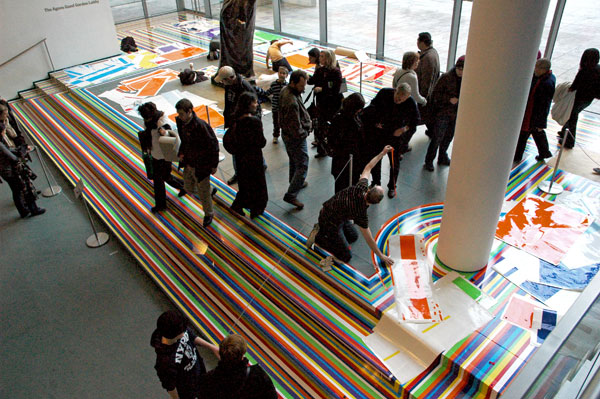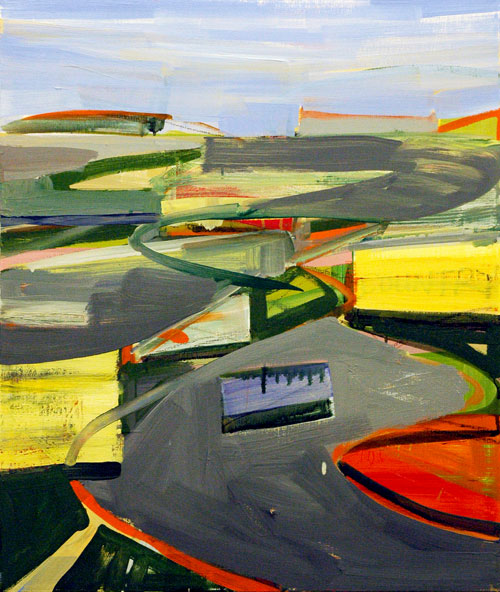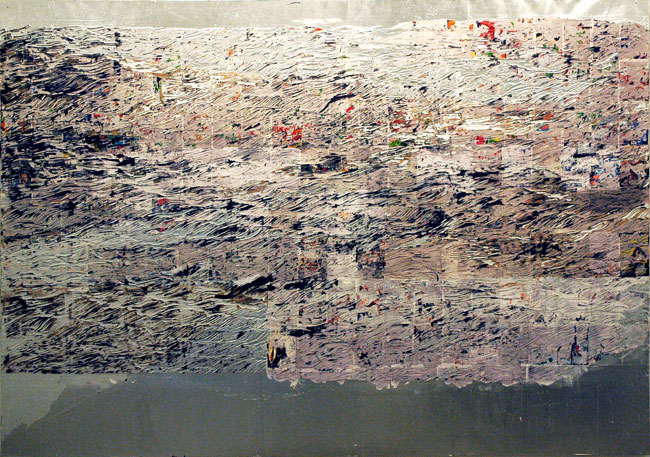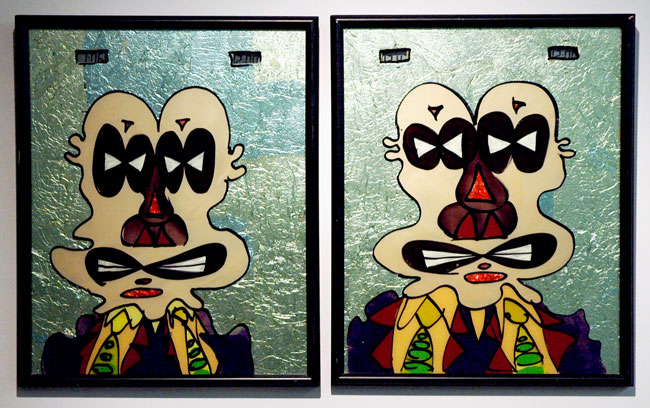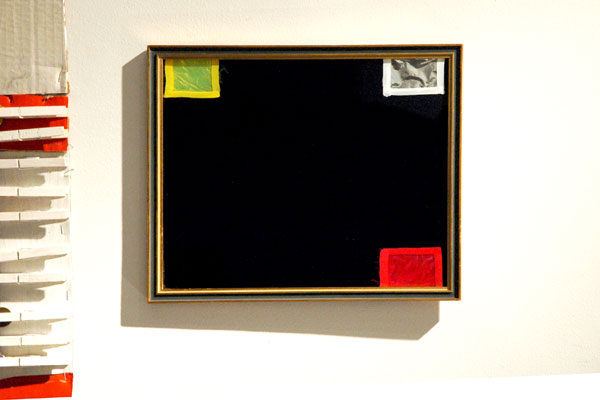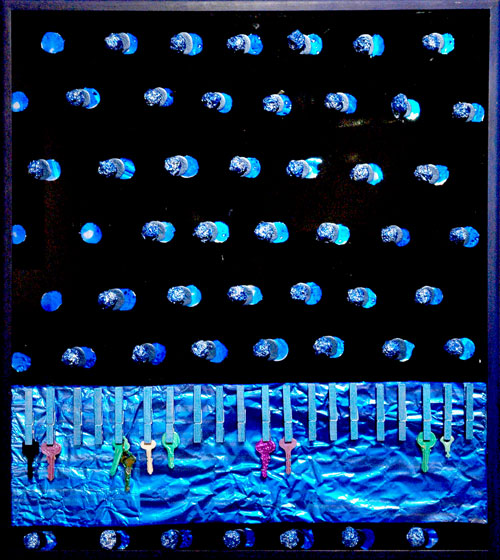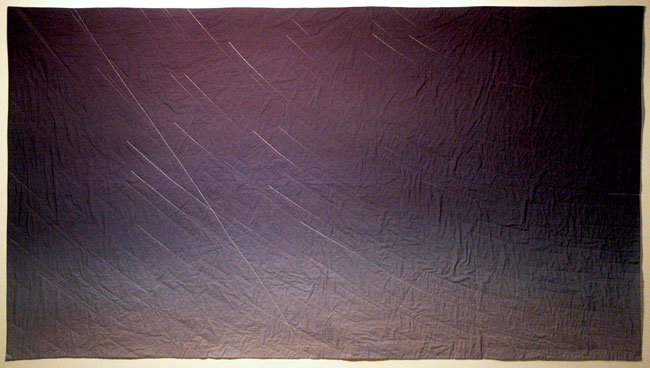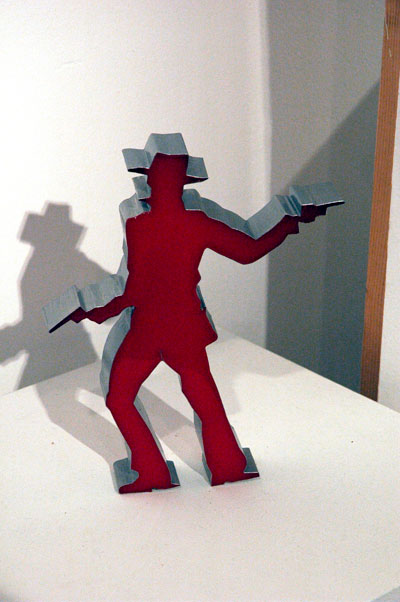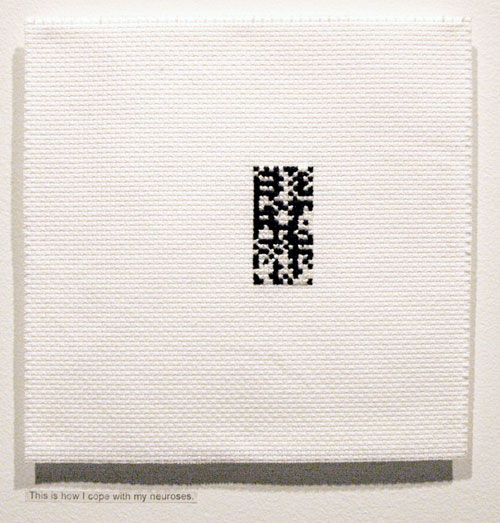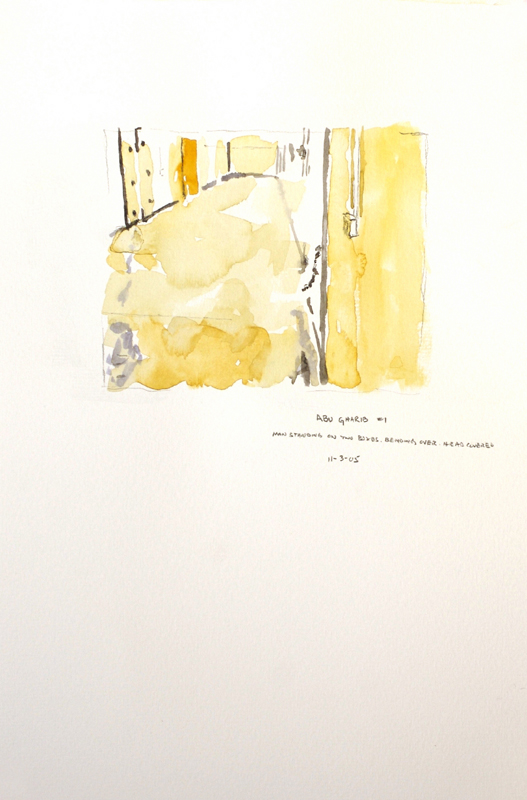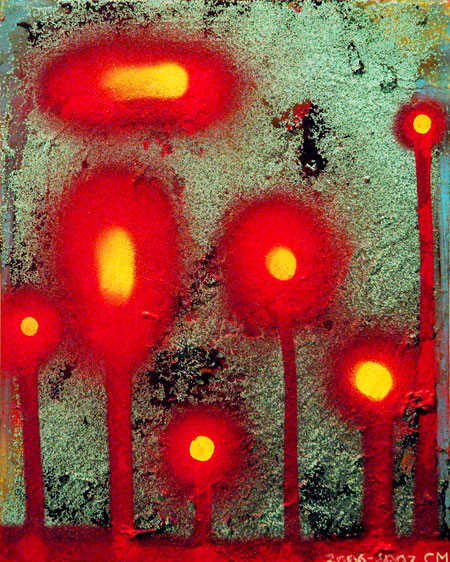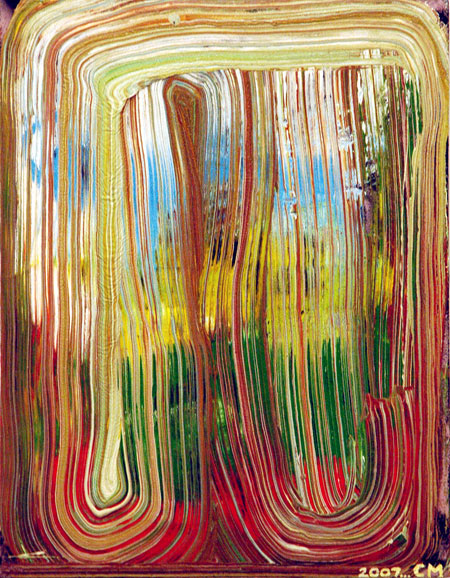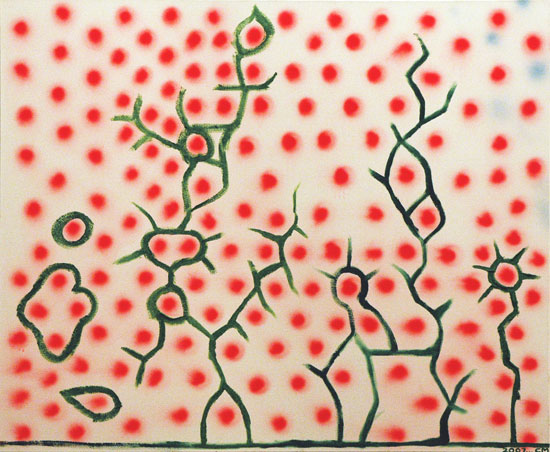
view of the gallery installation, with art suspended from bamboo poles and marine rigging in a reference to the innovative poles inside Peggy Guggenheim's gallery, Art of This Century [Stephen Ellis's 2000 untitled oil and alkyd canvas is in the center of the image; James Hyde's new "Chunk Chair" sits below and behind it; Sherrie Levine's "Untitled (after Henri Matisse)", from 1985, hangs on the right; and a good bit of Tony Feher's suspended bottles can be seen in the right foreground]
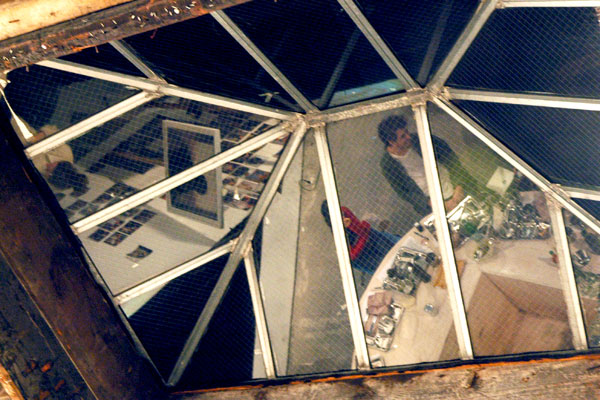
view of dinner with, and below, the stars [Mateo Tannatt's "[email protected]*BLUE ONION LATEO", built for the project, performing as the round table for the evenings]
It was the darndest thing. The email was from "New York is Dead", the subject line read "Rose Colored Glasses", and the message was signed by Joe Montgomery and Jesse Willenbring. It was an invitation from two people whose names I didn't recognize at the time, inviting me to participate in a "potluck dinner party group [designed to] show homage to Rirkrit Tiravanija and the breakthrough 1942 modern gallery, Art of This Century.
The evening suggested for my participation was described as one of the dinners they were holding at Gavin Brown's Chelsea space during the first two weeks of February. The email went on to say they had curated a group show of artists but they were also attempting to assemble a group of 11 guests to eat together in the gallery on each of the 11 nights the show would be up. We were told there would be spectators, and that there would be no fourth wall. We were being encouraged to share food and conversation, "and not just about art", for an entire evening, but other than being assigned a specific food theme (different for each evening) almost everything else would be up to our imagination.
It read as a pretty bold and ambitious concept, and I was immediately attracted to the references to art and food, but it was probably the connection with Brown, the bar Passerby and the evocation of Rirkrit and Peggy Guggenheim that pulled me in. I accepted the invitation, replying on my own and Barry's behalf before I realized it had actually come just to me. I was embarrassed when I realized my presumption, but my hosts immediately made it clear that my dual rsvp was totally in order - if not actually a huge improvement over the specificity of the original invite.
Barry and I still thought we might be taking a chance, especially since we balance a pretty full calendar and are jealous of our time off, but it sounded just quirky enough for me to want to make the commitment which, as it happened, included a little work in the kitchen for me.
It turned out to be a delight. I brought my pot, . . . er, bowl, and it became one of the dishes served to the guests at an sculptural round wooden table constructed for our sit-down dinner. We met some great people (unfortunately a flu condition kept co-host Joe Montgomery from making it the night we were there). We saw some really good art imaginatively installed, and were totally charmed by the situation, by our fellow guests and by the generosity of our very-hardworking hosts.
For more on the concept and the experience, and images from the first night's dinner, see the ArtForum Diary post.
There were works by almost three dozen artists surrounding us and at the table itself. What follows are images of just a sampling.
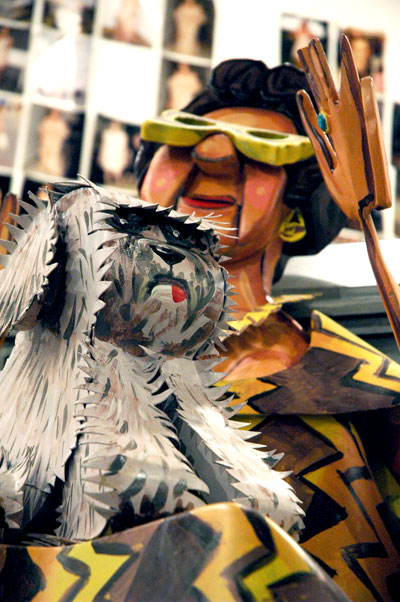
Red Grooms Queen Peggy 2004 painted aluminum 45" x 43" x 32" [detail of installation]

Charlotte Beckett Pit 2008 black mylar, aluminum, motor [installation view]
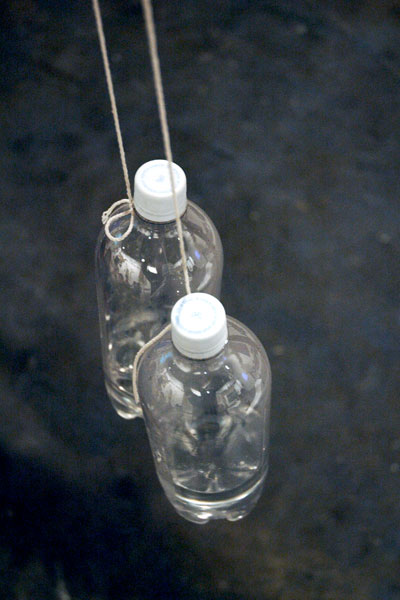
Tony Feher Untitled 2008 60" x 7" x 4" [large detail of installation]
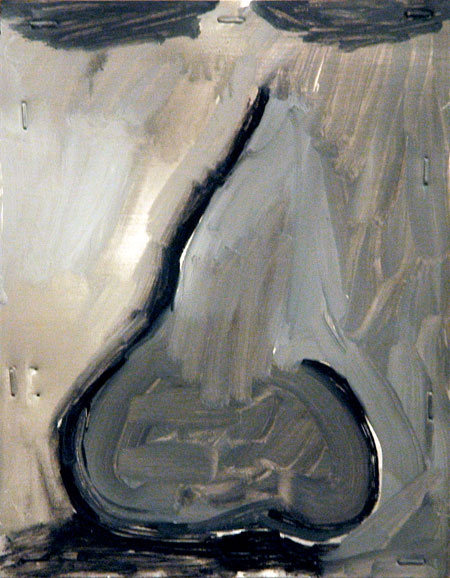
John Finneran Nose 2007 oil and stainless staples on aluminum 9" x 7"
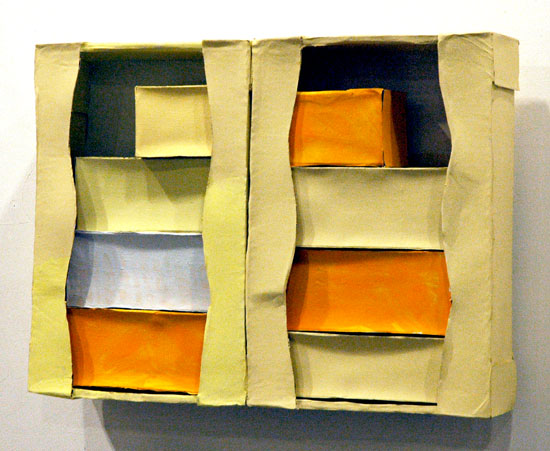
Nancy Shaver Fruit Box #1 2005 cardboard box, paper-covered boxes 16" x 22" x 5" [installation view]
A list (probably not totally complete) of artists included in the project's environment whose work is not represented in any of the images would include Varda Caivano, Brian Calvin, Nancy de Holl, Aaron Freeman, Wolf Kahn, Jake Keeler, Alex Kwartler, Virginia Lee Smith, Joshua Light Show & Pig Light Show, Emily Mason, Carter Mull, Dominic Neitz, Jesse Pearson, Amanda Ross-Ho, Cary Smith, Jennifer West, Yuh-Shioh Wong, Betty Woodman and Michael Zahn.
